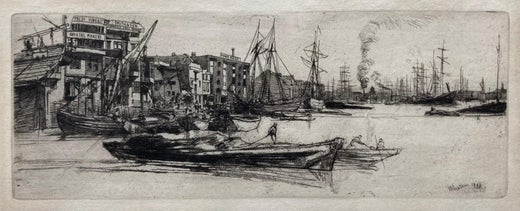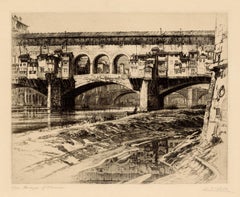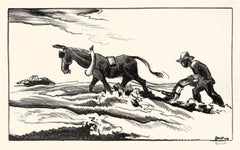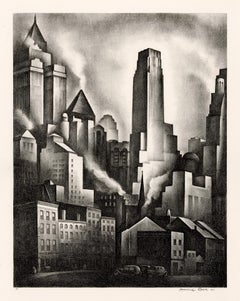James Abbott McNeill Whistler'En Plein Soleil' from the French Set, 'Douze eau-fortes d'apres Nature'1858
1858
About the Item
- Creator:James Abbott McNeill Whistler (1834-1903, American)
- Creation Year:1858
- Dimensions:Height: 3.94 in (10.01 cm)Width: 5.94 in (15.09 cm)
- Medium:
- Movement & Style:
- Period:
- Condition:
- Gallery Location:Myrtle Beach, SC
- Reference Number:Seller: 1037371stDibs: LU53236633072
James Abbott McNeill Whistler
James Abbott McNeill Whistler was an American artist active during the American Gilded Age and based primarily in the United Kingdom. Whistler was born on July 11, 1834, in Lowell. During his formative years in Paris in the 1850s, Whistler was influenced by the injunctions of the poet and theorist Charles Baudelaire that artists should take subjects from modern life and seek a new beauty in the teeming cities. Whistler's first major suite of prints, his French Set brought critical acclaim but disappointing sales. Seeking more generous patrons, he moved to London in 1859. Initially, under the influence of his brother-in-law Francis Seymour Haden, a pioneer of the etching revival, he began a series of superbly observed and finely detailed views of the River Thames with its shipping, thriving wharves and picturesque characters. In his Thames Set etchings, Whistler often introduced the figures of workmen, boatmen or loungers in the foregrounds. Whistler died on July 17, 1903, in London.
You May Also Like
Mid-19th Century Impressionist Landscape Prints
Laid Paper, Drypoint, Etching
19th Century Impressionist Figurative Prints
Drypoint, Etching
Mid-19th Century American Impressionist Figurative Prints
Etching
1890s Impressionist Figurative Prints
Drypoint, Etching
Early 1900s Impressionist Figurative Prints
Handmade Paper, Drypoint, Etching
1930s American Impressionist Landscape Prints
Laid Paper, Etching
1930s American Impressionist Figurative Prints
Ink, Etching, Laid Paper
Early 1900s American Impressionist Landscape Prints
Handmade Paper, Etching
1920s American Impressionist Landscape Prints
Laid Paper, Etching
1940s American Impressionist Landscape Prints
Paper, Printer's Ink, Etching
More From This Seller
View All1920s American Impressionist Figurative Prints
Etching
1920s American Modern Landscape Prints
Etching, Aquatint
1930s American Realist Figurative Prints
Lithograph
1930s American Modern Figurative Prints
Lithograph
1930s Showa Figurative Prints
Woodcut
1910s American Impressionist Landscape Prints
Etching



